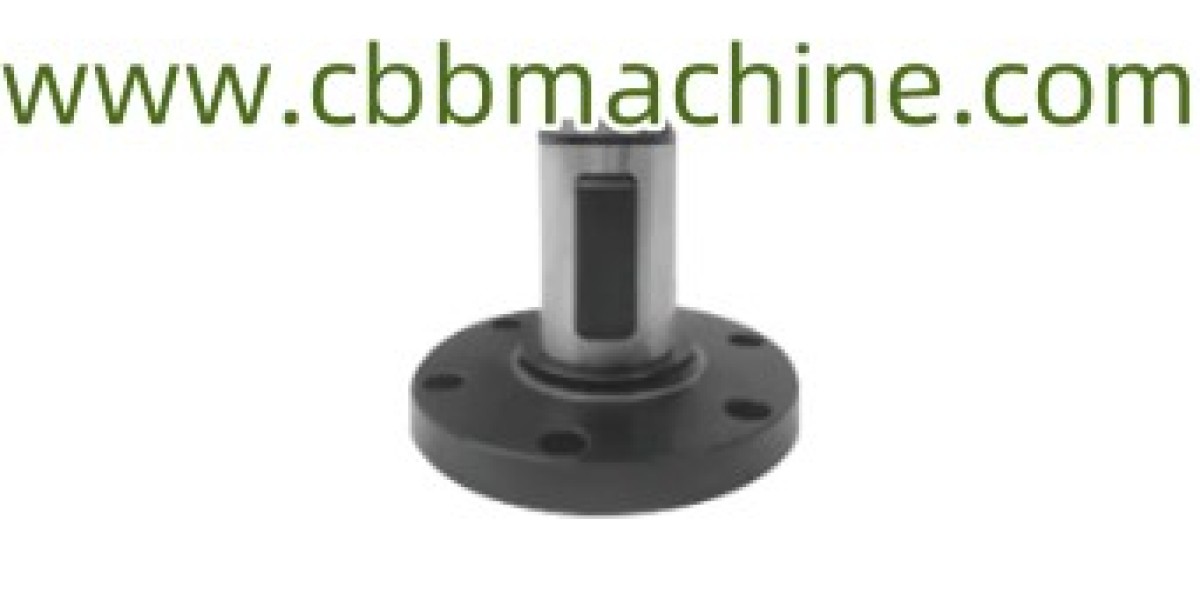Magnetic Powder Brake: Enhancing Precision and Efficiency in Industrial Processes
In the fast-paced world of industrial manufacturing, precision and efficiency are paramount. Every production line needs machinery that can operate smoothly, without interruptions or flaws. One essential component that plays a pivotal role in achieving this goal is the Magnetic Powder Brake. These brakes are not just a breakthrough in technology—they offer several benefits in terms of torque control, precision, and maintenance reduction.
In this blog, we will explore the functionality, advantages, and key applications of Magnetic Powder Brakes, and why they are indispensable in industries ranging from packaging to printing and beyond.
What is a Magnetic Powder Brake ?
A Magnetic Powder Brake is a non-contact braking system used to regulate the speed and torque in machinery. Unlike traditional friction-based braking systems, which rely on physical contact to create braking force, Magnetic Powder Brakes operate through magnetic fields and fine metallic powders.
In its basic form, a Magnetic Powder Brake consists of a rotor, a stator, and magnetic powder that is suspended between them. The stator is equipped with an electromagnetic coil. When electricity flows through this coil, it generates a magnetic field. The magnetic field causes the powder to form a chain-like structure, creating resistance between the rotor and stator, which in turn applies controlled braking force to the rotor. By adjusting the strength of the magnetic field, the torque applied can be fine-tuned, providing precise control over the speed and force exerted.
Why Choose a Magnetic Powder Brake?
1. Precision Torque Control
One of the main benefits of Magnetic Powder Brakes is their ability to deliver precise torque control. Whether it's for high-speed operations or delicate material handling, these brakes allow for highly adjustable braking power. The torque can be changed by simply adjusting the electric current supplied to the magnetic coil. This level of control is crucial for industries like packaging, textiles, and printing, where maintaining exact tension is vital to preventing material breakage or misalignment.
2. Non-Contact Design
A key advantage of the Magnetic Powder Brake is that it operates without direct contact between the braking components. Traditional mechanical brakes suffer from friction and wear over time, which leads to maintenance issues and downtime. On the other hand, the Magnetic Powder Brake reduces wear because it doesn’t rely on physical contact to generate resistance. This not only extends the life of the brake but also minimizes maintenance costs, which is a major benefit for high-output production lines.
3. Smooth, Jerk-Free Braking
In high-speed applications, even slight fluctuations in braking force can cause significant operational problems. Magnetic Powder Brakes provide smooth, gradual braking, reducing the risk of jerks or abrupt halts that could damage materials or machinery. This smooth braking is especially valuable in industries such as textile manufacturing, where delicate materials must be handled carefully to avoid damage.
4. Improved System Efficiency
Since Magnetic Powder Brakes offer precise control over torque and speed, they help optimize the entire production process. By maintaining steady tension and speed, manufacturers can ensure that their equipment runs more efficiently, reducing downtime and material wastage. These brakes also improve overall product quality by preventing the issues that arise from inconsistent speed or excessive tension.
5. Longer Lifespan and Reduced Heat Build-Up
Heat buildup is a common concern in high-speed industrial applications, where frictional braking systems may overheat and degrade over time. Since Magnetic Powder Brakes operate without direct contact, they are more resistant to heat buildup. This helps maintain consistent performance even under extreme conditions, leading to a longer lifespan and better reliability compared to traditional braking systems.
Applications of Magnetic Powder Brakes
The versatility of Magnetic Powder Brakes means they are used in a wide range of industries and applications. Here are some common ways these brakes are utilized:
1. Tension Control in Winding and Unwinding
In industries that involve material winding and unwinding, such as textile manufacturing, film production, and paper processing, it’s crucial to maintain consistent tension. A Magnetic Powder Brake provides the precise torque control necessary to regulate the speed of the winding and unwinding processes, preventing damage such as tearing, stretching, or misalignment.
2. Packaging and Printing
In the packaging and printing industries, maintaining consistent tension and speed is critical for ensuring high-quality prints and packaging. Magnetic Powder Brakes are used to control the movement of machines such as printing presses, packaging lines, and labeling machines. The brake’s smooth and adjustable torque control ensures that materials are processed at the right speed without compromising quality.
3. Conveyor Systems
Automated conveyor systems rely on precise speed and torque control to handle products efficiently. Whether it’s sorting, loading, or unloading, the Magnetic Powder Brake can help regulate conveyor belt speed and ensure smooth operation, preventing items from being damaged or misplaced. The precise control over speed and deceleration helps optimize the flow of materials in production lines.
4. Automated Machinery
In automated manufacturing systems, Magnetic Powder Brakes provide reliable and precise control over robotic arms, assembly lines, and other automated machinery. These systems often require precise speed adjustments to prevent errors in product assembly. The Magnetic Powder Brake ensures smooth operation, contributing to better overall system performance and reliability.
5. Torque Testing and Load Simulation
Magnetic Powder Brakes are also valuable tools in testing and simulation environments. By varying the magnetic field, these brakes can simulate different load conditions and torque levels, making them essential for engineers and researchers conducting performance testing on machinery or components. Their ability to provide adjustable resistance makes them ideal for testing the torque capacity of various mechanical systems.
Conclusion
In industries where precision, efficiency, and reliability are critical, the Magnetic Powder Brake stands out as an essential component in machinery. Whether it’s controlling tension in a winding operation, regulating the speed of packaging equipment, or ensuring smooth conveyor system operation, the Magnetic Powder Brake provides unmatched performance and reliability. With its non-contact design, smooth braking, and reduced maintenance needs, it helps companies improve efficiency, reduce downtime, and increase the lifespan of their equipment.
By integrating Magnetic Powder Brakes into your operations, you can achieve a more productive, cost-effective, and reliable manufacturing process, ultimately leading to better quality products and increased profitability.






